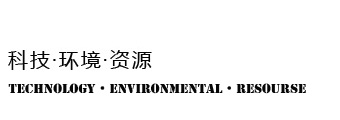How to recycle waste circuit boards
With the acceleration of the updating speed of electronic products, the amount of discarded printed circuit boards (PCBs), which are the main components of electronic waste, is also increasing. The environmental pollution caused by waste PCBs has also attracted the attention of various countries. Waste PCBs contain heavy metals such as lead, mercury, and hexavalent chromium, as well as toxic chemicals such as polybrominated biphenyls (PBB) and polybrominated diphenyl ethers (PBDE), which are used as flame retardant components. Groundwater and soil have caused huge pollution, which has brought great harm to people’s life and physical and mental health. On the waste PCB, there are nearly 20 kinds of non-ferrous metals and rare metals, which have high recovery value and economic value, and are a real mine waiting to be mined.
Several methods of circuit board recycling
1 Physical method
The physical method is a method of recycling using mechanical means and differences in the physical properties of PCBs.
1.1 Broken
The purpose of crushing is to dissociate the metal in the waste circuit board from the organic matter as much as possible, so as to improve the separation efficiency. Studies have found that when the crushing is 0.6 mm, the metal can basically achieve 100% dissociation, but the choice of crushing method and stages depends on the subsequent process.
1.2 Sorting
Sorting is to use the difference in physical properties such as density, particle size, electrical conductivity, magnetic permeability and surface properties of materials to achieve separation. At present, wind shaking table technology, flotation separation technology, cyclone separation technology, floating-sink separation and eddy current separation technology are widely used.
2. Supercritical technology treatment method
Supercritical fluid extraction technology refers to the purification method of extracting and separating by using the influence of pressure and temperature on the dissolving capacity of supercritical fluid under the condition of not changing the chemical composition. Compared with traditional extraction methods, the supercritical CO2 extraction process has the advantages of environmental friendliness, convenient separation, low toxicity, little or no residue, and operation at room temperature.
The main research directions on the use of supercritical fluids to treat waste PCBs focus on two aspects: First, because supercritical CO2 fluids have the ability to extract resin and brominated flame retardant components in printed circuit boards. When the resin bonding material in the printed circuit board is removed by supercritical CO2 fluid, the copper foil layer and the glass fiber layer in the printed circuit board can be easily separated, thus providing the possibility of efficient recycling of materials in the printed circuit board . 2. Directly use supercritical fluid to extract metals in waste PCBs. Wai et al reported the extraction of Cd2+, Cu2+, Zn2+, Pb2+, Pd2+, As3+, Au3+, Ga3+ and According to the research results of Sb3+, the extraction efficiency is above 90%.
Supercritical treatment technology also has great disadvantages, such as: the high selectivity of extraction requires the addition of entrainer, which is harmful to the environment; the relatively high extraction pressure requires high equipment requirements; high temperature is used in the extraction process, so energy consumption is large.








Leave a Comment